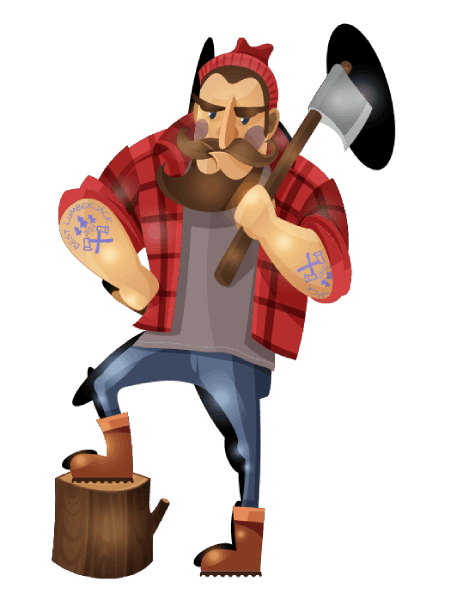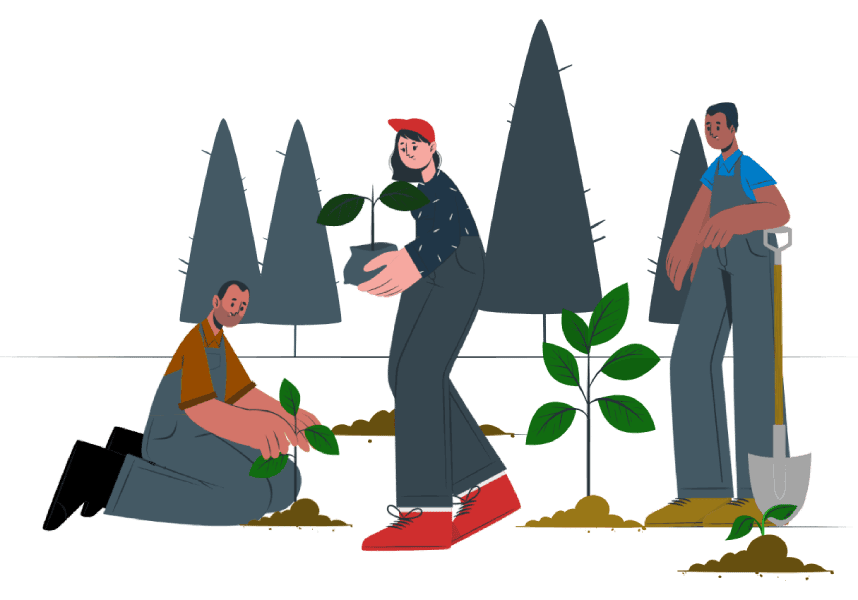Buying woodland is more expensive than you might think, and so understanding the different ways that it can be financed is important.
The type of mortgage or finance that is available will depend on what you will do with the land. Such as owning it for your own enjoyment and recreation or, running a forestry based business there.
This guide covers everything you need to know about financing the purchase of English woodland, and where to go for specialist mortgage advice.
Owning your own woodland
Owning a woodland can be an incredible experience that fulfills a long held dream of being close to nature and caring for the environment. You’ll be able to camp, picnic, and entertain friends or family in your wood. Plant trees or clear paths for exploring, make a clearing for a campfire and boiling a kettle, cut back brambles and bracken.
You may also spend days coppicing poles or fighting rhododendrons before simply sitting back and taking it all in by night. Enjoy the owls, watch badgers from afar, or gaze upward at the stars – owning woodland is an incomparable freedom.
Where the land is bought purely for private use, you will be unable to build on the land, and planning permission is unlikely to ever be granted.
Finance options
While many woodlands are bought with cash, numerous buyers will need ways of raising the capital required to buy land. A specialist mortgage broker will be able to explain your options, and suggest the best route for your situation.
Here are the options for woodland finance:
Remortgage
This option involves remortgaging an existing property to raise the extra funds needed. This would normally be a main residence but you could also remortgage a buy to let or holiday let.
Basically applying for a larger mortgage with a new lender.
Secured loan
Where a remortgage is not possible, a secured loan or second charge mortgage could help. This involves applying for a second mortgage against your home for the extra money needed.
You would then have two mortgages registered on the same property.
Woodland mortgage
A woodland mortgage is a loan that is secured against the wood itself. You will not be able to run a business on the land, which must only be used for yourself and your family. The mortgage will be unregulated.
Commercial mortgage
A commercial mortgage will be needed where you intend to set up a business venture on the woodland. This could be a forestry school, set up a timber yard or run paid-for outdoor activities on the land.
How to get a woodland mortgage
There are a limited number of lenders that offer woodland mortgages, and it’s unlikely you would find one by visiting your local high street.
These niche lenders tend to work with specialist mortgage brokers, rather than direct with the borrower.
This type of loan will be secured against the land itself, with the lender’s charge being registered with Land Registry.
You will need to have sufficient income to qualify for the new mortgage. Some lenders will offer four times your annual earnings, but with a maximum loan to value of 70%.
So you will need a minimum cash deposit of 30% of the purchase price and the interest rates charged are normally higher than a standard residential mortgage.
Your other financial commitments, including mortgages and loans, will be assessed by the lender as part of their underwriting process, to make sure that the repayments are affordable.
Your personal circumstances, the plot of woodland you intend to buy and how you will use it will all affect the interest rates and lending terms available.

Loan to value
70% maximum LTV
Age
Aged 18 or over
Term
Maximum 25 years
Minimum loan
£10,000
Refinancing a woodland mortgage
If you have owned your wood for a while then it could be worthwhile refinancing it. It is possible to remortgage your woodland mortgage, just as you would for your own home.
But you won’t have quite as many options to choose from.
You may wish to switch lender if you feel the rates are too high, or perhaps the special interest rate you applied for a few years ago is soon to stop. Either way it’s a good idea to see what exit fees, or early repayment charges, you may have to pay, before you commit to a new deal.
A broker who specialises in woodland mortgages will be able to research your options and explain what’s available. If you’ve had your mortgage for a while, maybe there are some new lending options that you could take advantage of. Your broker will assess what’s best and let you know whether to stay where you are or to remortgage over to a new lender.
If you have sufficient equity in your own home it may be cheaper to absorb the woodland mortgage into your main home mortgage, as the rates charged will be cheaper. (This will put your home at risk so take advice first)
Bear in mind that all remortgages involve applying for a brand new mortgage with a new lender, so be prepared to dig out your ID documents and proof of earnings etc.
How a mortgage broker can help
A specialist mortgage broker will be familiar with how woodland mortgages work and which lenders offer them.
We recommend speaking to an experienced broker at the earliest opportunity, so that there is enough time to discuss what you want to do and then research the various finance options.
This way you can be better prepared when putting an offer in to buy a plot. These mortgages are fully underwritten, meaning that the lenders look into your income, expenses and other mortgage commitments, before making a decision.
A broker will be able to pre-empt this step, so that only the right lenders are approached.
It’s important to remember that a broker has access to all of the major lenders, plus access to all of the smaller lenders and niche finance houses.
This gives you an enormous amount of choice, which is only provided by a whole of market mortgage broker.

The next
STEP
Respect Mortgages works with one of the UK’s largest and most respected independent mortgage brokers.
Our FREE service can pair you up with one of their woodland mortgage experts. Click the button below to get started.
Types of Woodland
There are three general types of woodland:
Mixed Deciduous woods are usually composed of oak, ash, beech, chestnut, silver birch, willow, or sycamore. You may have sections with a fully grown canopy that offers deep shade and a clear view underneath; other areas may still be maturing or need replanting. With the recent increase in demand for wood fuel, mature timber can fetch a good price in the market.
Caring for your woodland is rewarding – you have the opportunity to bring new life to older sections and create something beautiful.
Coniferous woods are typically found in plantations, comprising of one or two to three varieties. They are easy to manage and walk through if they have been thinned and maintained properly. The scent from the needles is pleasing throughout all seasons, as the vibrant green needles remain lush.
Growth rates for these trees are faster than other types, so thinnings can be taken regularly for use or sale. This will make room for the mature trees that eventually take their place.
Coppice is a method of woodland management whereby deciduous trees are cut down and re-sprout from the remaining trunk. This technique allows for rapid growth and can be repeated every 12-20 years. The poles created can be used for fencing, firewood, or minor building projects. Coppice has been used throughout history as a main product of woodland, typically chestnut, hornbeam, hazel, holly, or silver birch.
When the ground is allowed to receive light again through cutting the coppice, native flowers will bloom once more which provide food and breeding places for butterflies and birds. If neglected, this biodiverse environment can be restored by continual coppicing.
Ancient woodland
Ancient Woodland is any land that has been forested since the 1600’s, this is when maps started to be reasonably accurate so we can tell that these areas have had tree cover for hundreds of years. Such woodlands were often managed through coppicing or pollarding, providing wood and wood products to nearby settlements. Coppicing and pollarding are forms of woodland management which involve cutting down trees to facilitate regrowth, allowing for a more efficient harvesting method as well as promoting biodiversity.
These woodlands are of immense ecological importance, as they provide habitat for a wide variety of plants and animals. Ancient woodlands often contain trees that are hundreds of years old, providing valuable habitats for species like bats, deer, birds and various invertebrates. Common tree species found in ancient woodland include oak, ash, yew, birch and hornbeam amongst others. In addition to these trees, Ancient Woodland can also feature a wide range of understory shrubs and flowering plants such as bluebells and violets.
The largest ancient woodland in the United Kingdom is Glen Finglas, Scotland, which is 4,000 hectares (10,000 acres).
Looking after a woodland
Taking care of an English woodland can be as much or as little work as you like. While woodlands have been capable of looking after themselves for centuries, many owners choose to actively manage them in order to foster biodiversity, create glades, and grow timber. The process doesn’t need to take up tons of time or money, but it can make a great hobby – similar to curating a tree collection or maintaining a wildlife sanctuary, yet on a smaller scale.
As an owner of a woodland, you don’t have to do much – your main obligation is avoiding hazardous trees near roads or walkways. But there are plenty of opportunities to enjoy and nurture the wood: creating glades, sowing new trees, or even setting up “base camp” in the woods.
For not much money, owners can do a lot in their woodlands. Hand tools are inexpensive and working on your land provides a great workout. It’s even more rewarding when friends and family join in to help out – it’s a fun way to bond and get more done quickly.
To that end, some enjoyable projects could include: establishing new trees, creating pathways, putting up swings, building bridges over streams, or constructing dens.


English forests are highly protected so planning permission applications are almost universally rejected.
Because of this you will be unable to build a home or holiday let. You may be able to build something basic like a wood shed or tool shed.
Unfortunately not. Due to their protected status you cannot build a house or dwelling on the land.
While you can’t build a permanent structure to live in, you can stay on your land for short periods. You can do this for up to 28 days per year. Plenty of time to enjoy enjoy camping trips.
The land is yours and becomes your private land.
However, existing public footpaths must remain open and maintained (by you). Should your woodland be designated as common land then the public are allowed to roam freely.
- You are allowed to sell the timber that originates from your land.
- You could rent the space to other businesses or groups.
- You could set up a forest school.
- The land could be used for paintballing, survival training, laser quest etc.
In the majority of woodlands (where a Tree Preservation Order is not in effect), you are allowed to cut up to five cubic meters of timber every three months. That’s roughly the size of a car, not taking into consideration any branches that may come with it. This is an incredible amount of wood, enough to enjoy your own piece of woodland and reap its rewards.
You are permitted to sell the timber generated within these limits.
Buying woodland is an opportunity to spend more time in nature, improve your health and wellbeing, and perhaps benefit financially as well.
Although not guaranteed, it is likely, based on past figures, that the land will appreciate in value.
The income made from selling timber is tax free and woodland owned for more than two years is free of inheritance tax.
Buying a plot of woodland could turn out to be an astute investment financially, although most investors will initially be buying the land just to spend time in and enjoy with their family.
For a woodland mortgage the lender will place a first legal charge on the land. This is the same type of charge that you would have for a main mortgage on your home and will be formally registered with Land Registry.
This means that should you fall into arrears and default on the loan, they have the ability to repossess the land and then sell it to recoup their costs and outstanding debt.
Yes, plenty.
Capital Gains Tax – A growing timber crop is exempt from Capital Gains Tax (but not the land it grows on), where managed as a commercial investment. So the value of the trees as they mature is not taxed.
Income Tax – All income from the sale of timber from the ownership of commercial woodlands is exempt from both income and corporation tax.
Inheritance Tax (IHT) – Commercial woodland qualifies for 100% relief from inheritance tax when you have owned them for two years or more. This includes the value of the trees and the underlying land.


